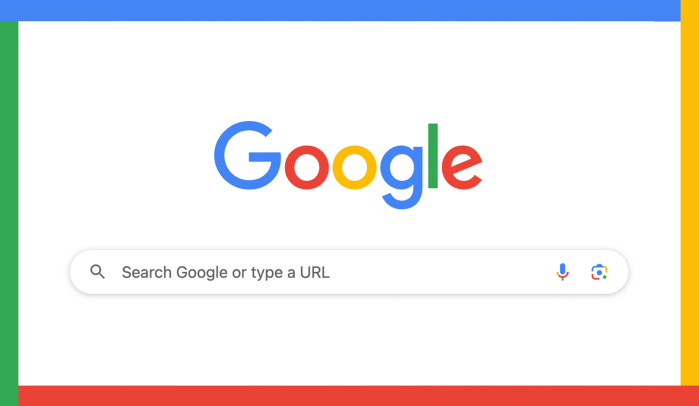UPDATED APRIL 9, 2024
Google search is powerful
It’s estimated that Google processes around 99,000 search queries every second. That’s a whole lotta searchin’ going on!
If you have a website and blog, you’ll want to make sure a proportion of those searches come to you. And not just any old searches, but people who are genuinely interested in what you’re putting out there and the ideal customers you want to attract.
Google search is smart, too
Google receives around 2 trillion search queries globally every year. It’s using the data from those searches to determine the search intent behind them and improve the results it’s returning.
So, if you’re wondering how Google seems to know instinctively what it is you want to see, this is how.
How can Google search attract your ideal customers?
Having been an SEO copywriter and content writer for the last 15+ years, I’ve learned a trick or two. And I know the more you understand about your ideal customers and how they use Google to search, the better your chances of reaching them and attracting them to your website.
In this article, I’ll show you five ways to draw them in.
How I attract your ideal customers to your website
These are five of the most important techniques I’ll use to research and choose your website’s SEO keywords.
1. Making your SEO keywords relevant

When I first start researching the copy or content for your page, I’ll be looking for words and phrases that are relevant and essential to your subject.
Google will use these words and phrases to understand what your page is about.
How I optimise for relevance
When I optimise for relevance it’s on a page-by-page basis. Each page will cover a different subject or aspect and have its own set of individual keywords.
I’ll typically target several keywords on each page and use complementary keywords and associated words for context and specificity.
2. Using Voice of Customer research

When your ideal customer does a Google search, they’ll do what comes naturally.
They’ll use language they’re familiar with and that makes sense to them. But it won’t necessarily be official language or correct terminology. When you’re targeting a particular user, it’s important to recognise this.
How I use VoC research
Voice of Customer (VoC) research is about learning the language your target audience is using and replicating that in your copy and content.
When I’m learning the language of your customer, I to go to the places where they hang out online and look at what they’re saying. This could be relevant forums, FAQs, comments sections, testimonials and reviews.
Once I have a sense of the language they’re using, I look at similar terms, questions and autocomplete data to get more ideas.
3. Paying attention to user search intent

What is search intent?
Search intent is the reason a user has for doing an online search.
Yoast identifies the four most common types of search intent as:
- Informational intent
- Navigational intent
- Transactional intent
- Commercial investigation.
Let’s have a look at each of those in more detail.
What is informational intent?
Informational intent refers to searches for information.
For example, users might be researching a specific topic or looking for the answer to a question.
What is navigational intent?
Navigational intent refers to searches for specific websites.
For example, Google would know that users searching ‘good housekeeping’ are looking for the Good Housekeeping website rather than good housekeeping tips.
What is transactional intent?
Transactional intent refers to searches for products/services to buy.
For example, a search for ‘fabric handbags’ brings up a range of buying options.
What is commercial investigation?
Commercial investigation refers to searches for information on products/services.
These searches may also be called pre-transactional intent as they’re done by users who are researching products/services before they buy.
For example, a commercial investigation search might be something like ‘most energy efficient heating system’ or ‘mobile phone network with best coverage’.
How I work out what a user is looking for
When I find a potential new keyword, I’ll look at the top results for that keyword on Google.
This is because, in most cases, Google has learned what its users are looking for when they type in certain search terms. So, the top sites on its search engine results page (SERP) are what its users are expecting to see.
If the top ranking pages are a good match with the content I’m creating, I know the keyword is a good one for me to use. If not, I’ll know I need to think again.
4. Evaluating the searches and keyword difficulty

Looking at the searches and competition gives me an idea of how each key phrase is likely to perform.
What are the searches?
My keyword research tool shows me the average number of times a key phrase has been typed into Google in the last 12 months.
I can narrow this down by country. And I can see the figures month by month, so I’ll know if the average searches are spread evenly throughout the month or if there’s just a random spike.
A good keyword will have a consistent number of searches every month — unless it’s something more seasonal that’s searched for at a specific time of year.
A high number of searches is usually a good sign. But this will all depend on the keyword itself and how niche it is.
What is the keyword difficulty?
Keyword difficulty tells me how difficult a keyword will be to rank for, based on what’s already ranking.
Generally, a keyword will be harder to rank for if lots of other websites are trying to rank for it — especially if those websites have high authority.
Using the searches and keyword difficulty information helps me weigh up if it’s worth trying to rank for that particular keyword or whether I should look elsewhere.
5. Semantics

Google search has evolved and now uses semantics to determine the meanings and relationships of the words on the page. This gives users much more tailored and accurate search results.
How I write for semantic search
Writing for semantic search is about supporting your keywords with accompanying words that help give them context and meaning.
If I’m writing about iron, that could be the metal, the dietary mineral or the appliance. Using semantics can help Google to determine which one is the right match.
If it’s the metal, I’ll include words like metal, ferrous, oxide, cast, wrought, forge and furnace.
If it’s the dietary mineral, I’d use words like supplement, anaemia and fortified.
And if it’s the appliance, I’d use board, crease, fabric, press and steam.
I use semantics naturally when I write, but knowing this is a factor means I check my copy more rigorously to make sure the right words are in there.
Do you need help with SEO copywriting?
Writing for your business and doing your own SEO can be quite a task.
And if you don’t have the experience or the right tools at your disposal, it could be taking up a lot of your valuable time.
This is where a skilled SEO writer could help you.
I’m a copywriter and content writer who’s been writing professionally for more than 20 years and successfully implementing SEO for more than 15 years.
If you need someone you can trust to take over your SEO writing, you can find out more about me and my services on my website.

You might also like…



